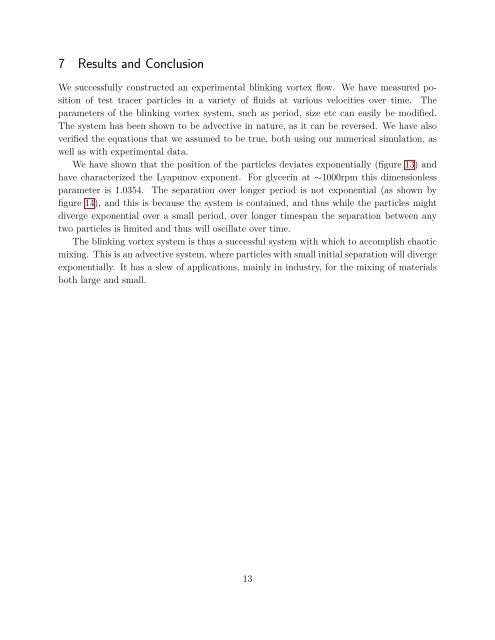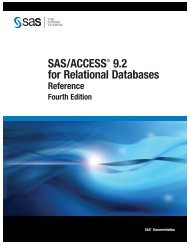Project paper - The Department of Physics and Astronomy
Project paper - The Department of Physics and Astronomy
Project paper - The Department of Physics and Astronomy
You also want an ePaper? Increase the reach of your titles
YUMPU automatically turns print PDFs into web optimized ePapers that Google loves.
7 Results <strong>and</strong> ConclusionWe successfully constructed an experimental blinking vortex flow. We have measured position<strong>of</strong> test tracer particles in a variety <strong>of</strong> fluids at various velocities over time. <strong>The</strong>parameters <strong>of</strong> the blinking vortex system, such as period, size etc can easily be modified.<strong>The</strong> system has been shown to be advective in nature, as it can be reversed. We have alsoverified the equations that we assumed to be true, both using our numerical simulation, aswell as with experimental data.We have shown that the position <strong>of</strong> the particles deviates exponentially (figure 13) <strong>and</strong>have characterized the Lyapunov exponent. For glycerin at ∼1000rpm this dimensionlessparameter is 1.0354. <strong>The</strong> separation over longer period is not exponential (as shown byfigure 14), <strong>and</strong> this is because the system is contained, <strong>and</strong> thus while the particles mightdiverge exponential over a small period, over longer timespan the separation between anytwo particles is limited <strong>and</strong> thus will oscillate over time.<strong>The</strong> blinking vortex system is thus a successful system with which to accomplish chaoticmixing. This is an advective system, where particles with small initial separation will divergeexponentially. It has a slew <strong>of</strong> applications, mainly in industry, for the mixing <strong>of</strong> materialsboth large <strong>and</strong> small.13
















